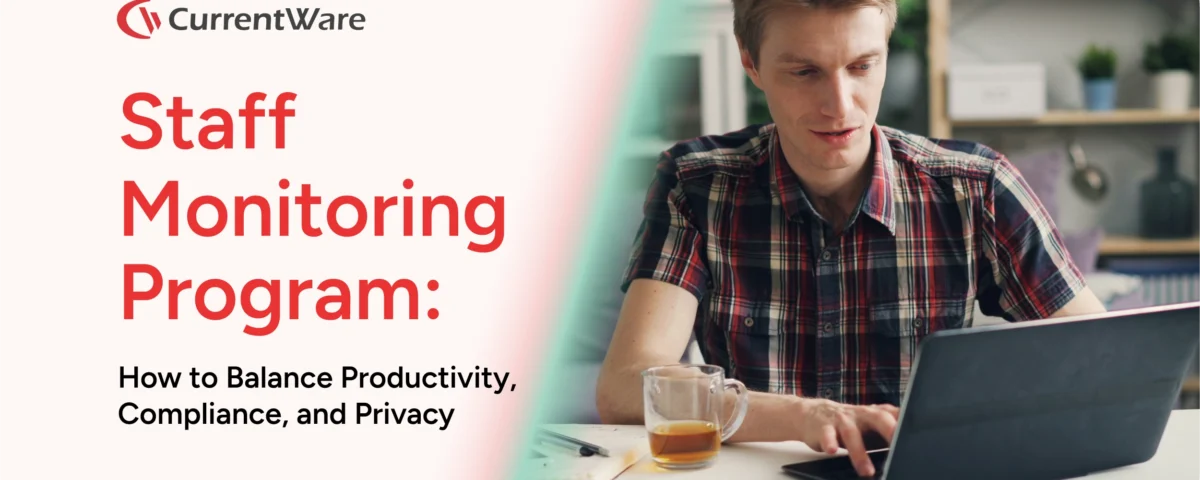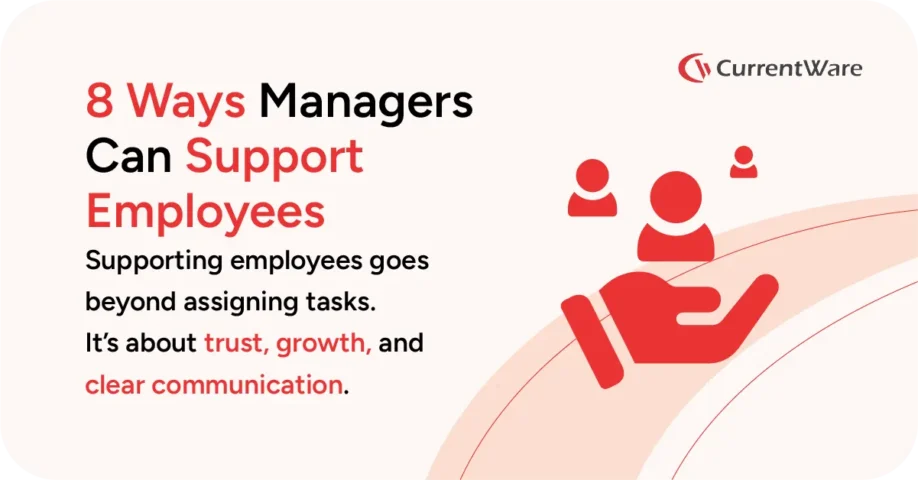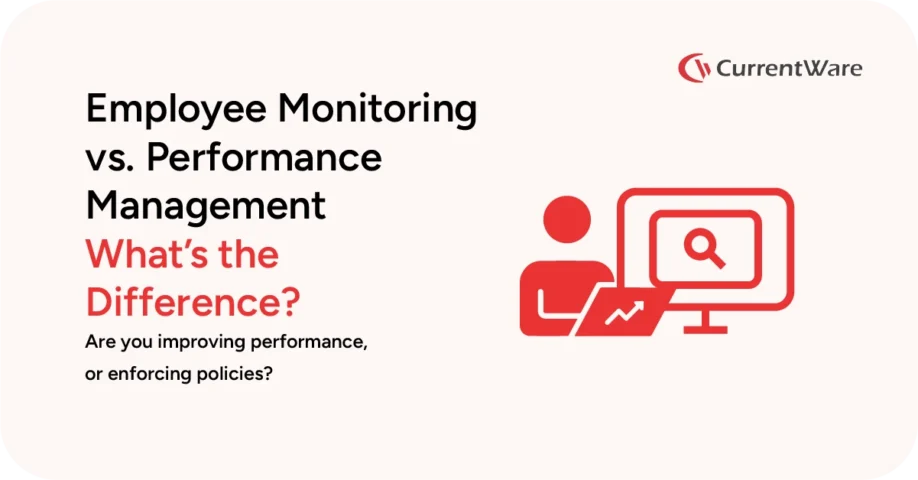Staff Monitoring Program: How to Balance Productivity, Compliance, and Privacy

Table of Contents
- What is a Staff Monitoring Program?
- Key Features of Staff Monitoring Software
- Business Use Cases & Industry Applications
- ROI of Staff Monitoring Programs
- Compliance, Legal & Privacy Considerations
- Security and Data Protection in Staff Monitoring
- How to Choose the Right Staff Monitoring Program
- Case Studies: Staff Monitoring in Action
- Conclusion
- Frequently Asked Questions
A staff monitoring program is a structured approach that uses monitoring tools and techniques to track employees’ computer usage, activity, and performance in the workplace. These systems gather real-time data on work behaviors to promote accountability, ensure compliance, and mitigate insider threats.
The rise of remote and hybrid work has sped up the use of monitoring programs. Organizations now deal with new productivity challenges, a greater risk of accidental data loss, and more pressure to follow privacy and security regulations in distributed teams. As remote work becomes more common, companies face unique challenges in managing and monitoring employees outside the traditional office environment.
Modern staff monitoring solutions need to balance transparency and privacy. They should apply the same standards to all employees, no matter where they are. Clear policies must be made and communicated to ensure transparency for all employees, and legal boundaries should be respected. These programs can even help organizations maintain compliance and productivity in remote work environments, delivering benefits in situations that might otherwise be difficult to manage.
What is a Staff Monitoring Program?
A staff monitoring program is a systematic approach where employers are using tools or software to track and analyze employee activities, behaviors, and performance within the workplace. Synonyms for staff monitoring include “employee monitoring“ and “workplace surveillance”.
Ultimately, staff monitoring programs are about understanding and supporting people within the organization to improve engagement and productivity.
Key Features of Staff Monitoring Software
Staff monitoring software offers a rich set of features designed to help organizations enhance productivity, improve compliance, and protect against insider threats. As a comprehensive platform, staff monitoring software integrates multiple features to meet specific business needs, support various operating systems, and improve workflows and security within the organization. The key features typically found in leading employee monitoring solutions include:
• Time Tracking & Attendance Monitoring: Records employee work hours, login/logout times, and active/idle periods to identify productivity patterns.
• Productivity Analysis: Assesses efficiency and work patterns, categorizing activities as productive or unproductive.
• Website & Application Usage Monitoring: Logs which sites and apps are accessed during work hours for policy enforcement and risk detection.
• Screen Capture/Recording: Takes screenshots or records screens at intervals to document workflows and support audits. Video recording is a key feature, providing accurate activity tracking and deeper insights into employee work situations compared to screenshots alone.
• File Transfer Tracking: Monitors movements of sensitive files and documents to detect improper handling or sharing.
• Reporting & Analytics: Produces detailed reports on performance, compliance, and security metrics, supporting data-driven decisions.
Also Read: Employee Monitoring Software for Productivity & Security
Choose the Right Tool for the Job
For the IT-led goals of security, compliance, and risk mitigation.
- → Real-time tracking
- → Data for compliance and cost-saving decisions
Business Use Cases & Industry Applications
Staff monitoring software is used across various industries to address productivity, compliance, and security needs, especially in environments with remote or hybrid workforces.
• Remote & Hybrid Workforce Management: Enables tracking of productivity and engagement wherever employees work, helping managers ensure accountability and optimize remote policies. Monitoring remote employees' activities is crucial for improving productivity and managing remote workforce performance.
• Startups & SMEs: Assists small businesses in resource allocation, workflow optimization, and transparency for scaling teams. Monitoring software helps balance workload distribution and optimize team performance.
• Enterprises: Provides scalable oversight for large teams, helps prevent time theft, and generates detailed productivity reports for strategic decision-making. It also assists in managing workload across departments to ensure efficiency.
• Customer Service & Sales: Supports managers in identifying training needs, improving response times, and coaching team members by analyzing communication and activity patterns. Monitoring tools can significantly improve the team's overall output.
• IT & Security Operations: Detects unusual user activity such as shadow IT usage, prevents insider threats, and safeguards sensitive business data in companies with heightened security demands. Tracking progress and analyzing individual employee contributions within a project helps identify growth points and improve efficiency.
• Highly Regulated Sectors (Finance, Healthcare, Law): Ensures compliance with strict regulations (GDPR, HIPAA), logs activity for audits, and prevents data misuse or unauthorized access to sensitive information.
• General Business Operations: Optimizes software and office resource use, informs decisions on reducing SaaS costs and office space. Monitoring software ensures timely progress and prevents issues related to specific projects, supporting overall business efficiency.
ROI of Staff Monitoring Programs
Staff monitoring programs deliver significant ROI by boosting productivity, cutting unnecessary costs, streamlining HR admin, mitigating security risks, and supporting compliance. Staff monitoring software actively improves operational efficiency by providing actionable insights and enhancing overall performance.
• Labor Cost Reduction: Insights into employee activity help eliminate time theft and pay only for productive work, saving substantial payroll and operational expenses. However, some hidden costs might arise if overtime or unproductive hours are not properly tracked.
• Software Spend Management: Identify and reclaim underutilized or unused software licenses to avoid paying for unnecessary seats. There might also be overlooked subscriptions that contribute to unnecessary expenses.
• Heightened Operational Efficiency: Real-time tracking and targeted feedback curb inefficiencies and improve output. For example, even if two employees have similar skills, one might consistently outperform the other by 15-20%, and monitoring tools help identify these differences.
• Enhanced Compliance & Security: Monitoring deters non-compliance and blocks insider threats, helping companies avoid fines, legal bills, and reputational damage.
• Improved Client Satisfaction: Better productivity and adherence to standards ensure higher quality service and more satisfied clients, resulting in repeat business and revenue growth.
• Reporting & Analytics: Monitoring tools generate detailed report data, providing insights, timesheets, and analytics that help improve productivity and address potential issues.
Also Read: Employee Productivity Tracking Software—PC Use & Idle Time
Compliance, Legal & Privacy Considerations of a Staff Monitoring Program
Compliance, legal, and privacy considerations for a staff monitoring program involve adhering to laws, protecting employee rights, and maintaining transparency. For more information, see this article by SHRM.
• Legal Requirements: Organizations must comply with various laws, such as the Electronic Communications Privacy Act (ECPA) in the U.S., GDPR in Europe, and regional regulations like Ontario’s Employment Standards Act. Different jurisdictions may impose requirements for employee notification, consent, and limits on monitoring scope. It is essential to keep operations compliant and transparent to avoid legal risks and maintain trust.
• Transparency & Notification: Best practices and many legal frameworks emphasize informing employees about monitoring activities through clear policies. This includes what data is collected, how and why it is used, and who accesses it. Some states require written notice or consent before monitoring, especially for call recording or email tracking.
• Data Minimization and Purpose Limitation: Monitoring should be proportionate, targeting only necessary information to achieve legitimate business goals like security, compliance, or productivity improvements. Employers should avoid collecting excessive or personal data unrelated to work. Monitoring should focus on employee activities during their working time to ensure relevance and respect for privacy.
• Employee Privacy Rights: Employees retain rights over their data and privacy at work, including access to monitoring data and protections against unwarranted surveillance. Employers must respect reasonable expectations of privacy and avoid monitoring in private spaces like restrooms.
• Security & Data Handling: Collected data must be securely stored, access controlled, and retained only as long as needed. Regular audits and compliance checks help ensure ongoing adherence to privacy and security standards. Tracking should be limited to working hours to respect employee privacy outside of work.
By balancing legitimate business interests with respect for employee privacy and compliance mandates, staff monitoring programs can be ethically and legally implemented to enhance productivity and security.
Security and Data Protection in Staff Monitoring
Security and data protection are at the core of any effective staff monitoring program. As businesses increasingly rely on employee monitoring software to boost productivity and gain real-time insights into employee activity, it’s essential to ensure that all monitored data is handled with the highest standards of security and privacy. The best employee monitoring software not only tracks productivity and work patterns but also safeguards sensitive information, helping companies meet both operational and regulatory requirements.
When implementing employee monitoring, companies must prioritize features that protect employee privacy and secure all collected data. This means choosing solutions that offer robust encryption, secure storage, and granular access controls—ensuring that only authorized staff can view or manage monitored information. Real-time monitoring capabilities should be balanced with transparent practices, so employees understand what data is being collected, how it’s used, and who has access.
How to Choose the Right Staff Monitoring Program
When choosing a staff monitoring program, it’s important to focus on features and qualities that align with the organization’s goals for productivity, compliance, and security while respecting employee privacy. Start by evaluating your needs and initiating the process to implement a staff monitoring program for smarter operations and improved workflow.
Key factors to consider include:
• Comprehensive Activity Tracking: The software should provide detailed monitoring of websites visited, applications used, time spent on tasks, and idle vs active time to offer a clear picture of workforce productivity.
• Real-Time Monitoring & Alerts: Immediate visibility into employee actions and automatic alerts for suspicious behavior enable proactive management and insider threat prevention. The platform works in real-time to deliver actionable insights for effective decision-making.
• Data Loss Prevention (DLP): Controls over USB devices, file transfers, and cloud storage help safeguard sensitive company data from insider risks.
• Privacy Controls & Transparency: Features like role-based access, monitoring notifications, and policy customization help balance security needs with employee privacy and legal compliance.
• Cost & Usability: The solution should be easy to deploy, manage, and scaled to the size and nature of the workforce.
Also Read: CurrentWare’s IT Security Compliance Solutions for Audit Readiness
Case Studies: Staff Monitoring in Action
The Coding NetworkThe Coding Network, a healthcare coding firm with a fully remote workforce, leveraged CurrentWare’s staff monitoring program to overcome challenges with software adoption and productivity visibility within Citrix Workspace. Traditional Citrix reports only showed machine on/off status but lacked detailed employee activity insights, leaving a gap in understanding actual usage and engagement. By deploying CurrentWare, The Coding Network gained granular reports on logins, active vs idle time, software utilization, web browsing, and SaaS applications, which revealed adoption rates below expectations. This insight allowed managers to address non-compliance and increase the Citrix adoption rate to 100%, improving operational efficiency and compliance adherence |
EHOBEHOB, a medical device manufacturer specializing in pressure injury prevention, uses CurrentWare to enhance its HR investigations and overall workplace monitoring. The company found CurrentWare to be a quiet yet powerful tool that allows HR and IT teams to monitor employee activity efficiently without constant oversight. This capability is critical for investigating misconduct related to harassment, discrimination, theft, or resource misuse, enabling EHOB to gather objective, reliable evidence promptly when needed. The system’s ease of use and evolving features align well with EHOB’s mission to maintain fairness, accuracy, and a safe work environment for all employees. |
Conclusion
Staff monitoring programs provide critical value by boosting productivity, ensuring regulatory compliance, and protecting against insider threats. Through detailed activity tracking, these solutions give managers real-time insights into workforce behavior, enabling the identification and reduction of time theft, distraction, and inefficiency. At the same time, they offer robust controls to safeguard sensitive data and enforce security policies, helping companies remain compliant with industry regulations such as HIPAA, GDPR, and more.
Ready to get started with your own staff monitoring program? Download a free 14-day trial of CurrentWare or reach out to us to book a demo today! Try CurrentWare for free—no credit card required. Take the next step and experience how our software can help your organization.


